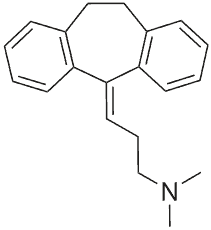A little-used class of antidepressants appears potentially effective in combating a particularly deadly form of lung cancer, according to a new study from researchers at the Stanford University School of Medicine.
And because the drugs have already been approved by the U.S. Food and Drug Administration for use in humans, the researchers have been able to quickly launch a clinical trial to test their theory in patients. The phase-2 trial is now recruiting participants with small-cell lung cancer and other, similar conditions like aggressive gastrointestinal neuroendocrine cancers.
The “repositioning” of an existing drug to treat a disorder other than the one for which it was originally approved is an example of how extremely large genetic and biological databases are changing the face of medicine.
“We are cutting down the decade or more and the $1 billion it can typically take to translate a laboratory finding into a successful drug treatment to about one to two years and spending about $100,000,” said Atul Butte, MD, PhD, associate professor of pediatrics.
Butte is the division chief of systems medicine and director of the Center for Pediatric Bioinformatics at Lucile Packard Children’s Hospital at Stanford. He is a co-senior author of the study, which will be published online Sept. 27 in Cancer Discovery. Julien Sage, PhD, associate professor of pediatrics, is the other senior author. The study’s lead author is postdoctoral scholar Nadine Jahchan, PhD. Joel Neal, MD, PhD, an assistant professor of medicine, is the principal investigator for the clinical trial.
Small-cell lung cancers account for only about 15 percent of all lung cancers, but they are particularly deadly. “The five-year survival for small-cell lung cancer is only 5 percent,” said Sage. “There has not been a single efficient therapy developed in the last 30 years. But when we began to test these drugs in human cancer cells grown in a dish and in a mouse model, they worked, and they worked, and they worked.” Specifically, the drugs activated a cellular self-destruct pathway that killed the cancer cells.
The researchers used a computerized discovery pipeline developed in Butte’s lab. Butte and former consulting faculty member Joel Dudley, PhD, also a co-author of the paper, founded and hold shares in a company called NuMedii, which has licensed the intellectual property described in the study and is further developing the drugs for clinical use. Butte, Sage, Dudley and Jahchan are listed on a patent filed on the use of specific tricyclic antidepressants and related molecules in neuroendocrine tumors.
The pipeline works by scanning the hundreds of thousands of gene-expression profiles (gathered by multiple researchers and stored in large databases) across many different cell types and tissues — some normal and some diseased, some treated with medications and some not. Alone, these profiles may not mean much to any one investigator or group, but when viewed together, researchers can pick out previously unsuspected patterns and trends.
For example, if a particular molecular pathway is routinely activated (as indicated by an increase in the expression levels of the genes involved) in a cancer cell, and a drug is shown to block or suppress that same pathway (by decreasing the expression of genes in the pathway), it’s possible the drug could be used to treat that type of cancer — regardless of the disease for which it was originally approved.
Butte and Sage have had success with this approach before. In 2011, they reported in Science Translational Medicine that an anti-ulcer drug might be effective against a different subtype of lung cancer, and that an anti-seizure drug could be a new way to treat inflammatory bowel disease.
This time around, Jahchan was interested in small-cell lung cancer. When researchers in the Butte lab used the computerized algorithm to identify possible drug candidates, tricyclic antidepressants were at the top of the list. These drugs are approved to treat depression, but have since been supplanted by newer antidepressants with fewer side effects.
Jahchan tested the effect of a tricyclic antidepressant called imipramine on human small-cell lung cancer cells grown in the laboratory and growing as tumors in laboratory mice. She found that the drug was able to potently activate a self-destruction pathway in the cancer cells and to slow or block metastases in the animals. The drug maintained its effectiveness regardless of whether the cancer cells had previously been exposed, and become resistant, to traditional chemotherapy treatments. Another drug, an antihistamine called promethazine, identified by the bioinformatics screen, also exhibited cancer-cell-killing abilities.
Although imipramine did not affect cells from another main type of lung cancer called non-small-cell lung adenocarcinoma, it did inhibit the growth of cells from other neuroendocrine tumors, including pancreatic neuroendocrine cancers, an aggressive skin cancer called Merkel cell carcinoma, and a pediatric cancer called neuroblastoma. (Neuroendocrine cells receive signals from the nervous system and secrete hormones like adrenaline into the blood to affect the body’s function.)
Further investigation showed that the drugs appear to work through a class of molecule on the cancer cells’ surfaces called G-protein-coupled receptors, but the researchers are continuing to investigate exactly how the drugs specifically kill neuroendocrine cancer cells.
“Our collaboration with the Butte lab allowed us to move very quickly from the initial idea to very convincing results,” Sage said. “It was less than 20 months from the time of our first discussion to a clinical trial because the bioinformatics approach had been established and the drugs are FDA-approved. By focusing on diseases with little hope for the patient, it’s easier to go forward fast.”


